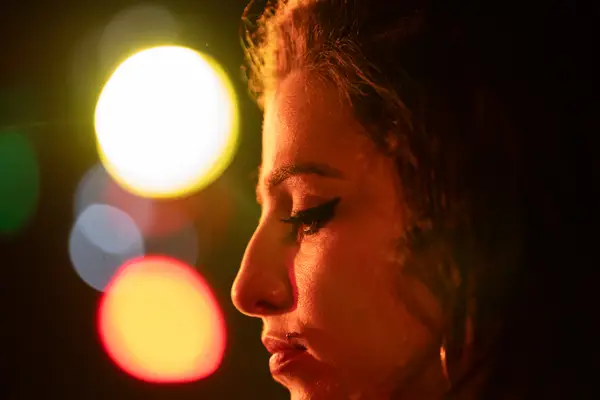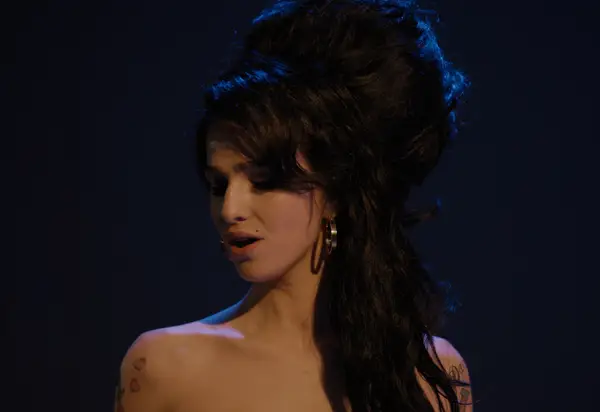Movie Review: Back to Black (2024)
(Edited)
A biographical drama film about the life and times of Amy Winehouse, an incredibly talented and gifted musician. The film follows the singer’s career throughout the noughties (2000s). Filming locations included the outside of Winehouse's first flat in Camden Town, Primrose Hill cafe, Ronnie Scott's Jazz Club, the Metropolis Studios in Chiswick, the Fitzroy Square and London Zoo; all related, in some way, to Amy Winehouse’s life.
WHAT I LIKED
- The film opens with a scene that turns into a small musical. This is, in my opinion, one of the strongest parts of “Back to Black” as it shows a family gathering, most of whom are musicians. Amy Winehouse grew up surrounded by music and with people who know how to perform it.
- There is indeed a lot of music in this biopic. The actress Marisa Abela, who plays Amy Winehouse, does live music performances in various settings, starting from Amy’s living room to The Dublin Castle pub in Camden town to BBC Radio 1 Live Lounge, to her performance at Grammys.

Marisa Abela as Amy Winehouse in "Back to Black" biopic. Source
- The framing and screen time Marisa Abela gets. Nothing gets missed in this sense; iconic beehive hairstyle, winged eyeliner, signature tattoos, Star of David, Amy Winehouse’s clothing choices. Same approach applies to production design. Every visual detail had been carefully considered to create the sense of authenticity and retaining fidelity.
- The scene where Amy Winehouse meets her future husband Blake Fielder-Civil (played by Jack O'Connell) for the first time. The performance of O’Connell and dialogues instantly change the film’s tone, creating a juxtaposition between ‘before’ and the great moment of greatness of acting. The effect of the scene is such as if the film had been plugged to additional source of energy. Unfortunately though, that ends up being a highlight rather than a constant quality there.
WHAT I DIDN’T LIKE
- “Back to Black” suffers from the syndrome that is all too prevalent in contemporary filmmaking and tv series, and this syndrome is characterized by relying on editing to cater to expectations of the audience or retain fidelity to source material, or both. Throughout the film there are scenes that are relatively clear statements about what parts and why they each cover in the life story of Amy Winehouse. Sure, that’s what biopics are supposed to feature, but the problem is, the decisions that had likely been made during both, storyboarding process and editing, become all too obvious, to the point where they affect the turbulence and flow of the film. One of the worst impressions one can get these days while watching a biopic or something based on real life events is that the scene had to be included right there and then because the fear of online backlash over its absence or different type of inclusion is greater than fear of the scene’s substance, contents being criticized. I’m thinking particularly of Amy grandmother Cynthia’s part, played by Lesley Ann Manville (Princess Margaret in the final two seasons of “The Crown” series) as an example, when writing this. Watching scenes with her I felt like I’m being told “this is the inspiration and influence Amy’s nan had on her”, “this is how Amy felt about her gran’s passing” et al. If I didn’t know any better, I’d probably leave a comment online about how emotionally touched I had been by those scenes in the film. But the truth is, I wasn’t. The truth is, I think I shouldn’t feel like I’m being told anything as part of Amy Winehouse’s curriculum in the first place. There is a difference between “show and tell” and “show, don’t tell”.
- Connected to some of the aspects mentioned above is the fact “Back to Black” doesn’t come across as a film about noughties. This is, in my opinion, the worst part about it. Amy Winehouse’s career happened during the decade, when Lindsay Lohan starred in “Mean Girls”, Jonathan Rhys Meyers was *making history sexy* in The Tudors series, Guy Ritchie filmed “RocknRolla”, Robert Rodriguez and Frank Miller wrote and directed (alongside Quentin Tarantino) “Sin City” adaptation, people were leaving auditoriums puking during “Hostel” screenings. Tabloids loved excess, debauchery, decadence; sensations were still pretty much their monopoly as Facebook hadn’t yet become a thing. Humankind hadn’t yet been changed by availability of information online to strive and make well informed decisions. With that said, there is a palpable lack of the full scope of the world Amy Winehouse lived in in “Back to Black”. Not to say anything about the absence of the appearance of that world through the lenses of drugs and substance abuse. Take that away from stories like one of Amy Winehouse, and the fidelity goes out the window.
I’m off to re-watch “Mulholland Drive” (2001).

Marisa Abela as Amy Winehouse in "Back to Black" biopic. Source
Peer Ynt
0
0
0.000
Thank you for your witness vote!
Have a !BEER on me!
To Opt-Out of my witness beer program just comment STOP below
!BEER to you too!